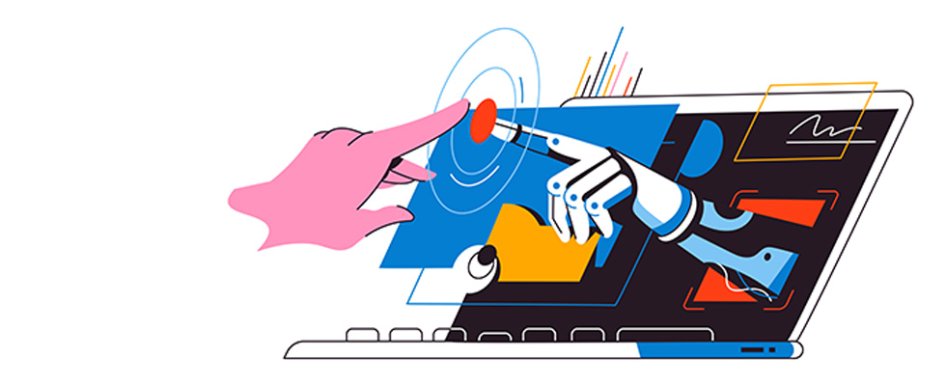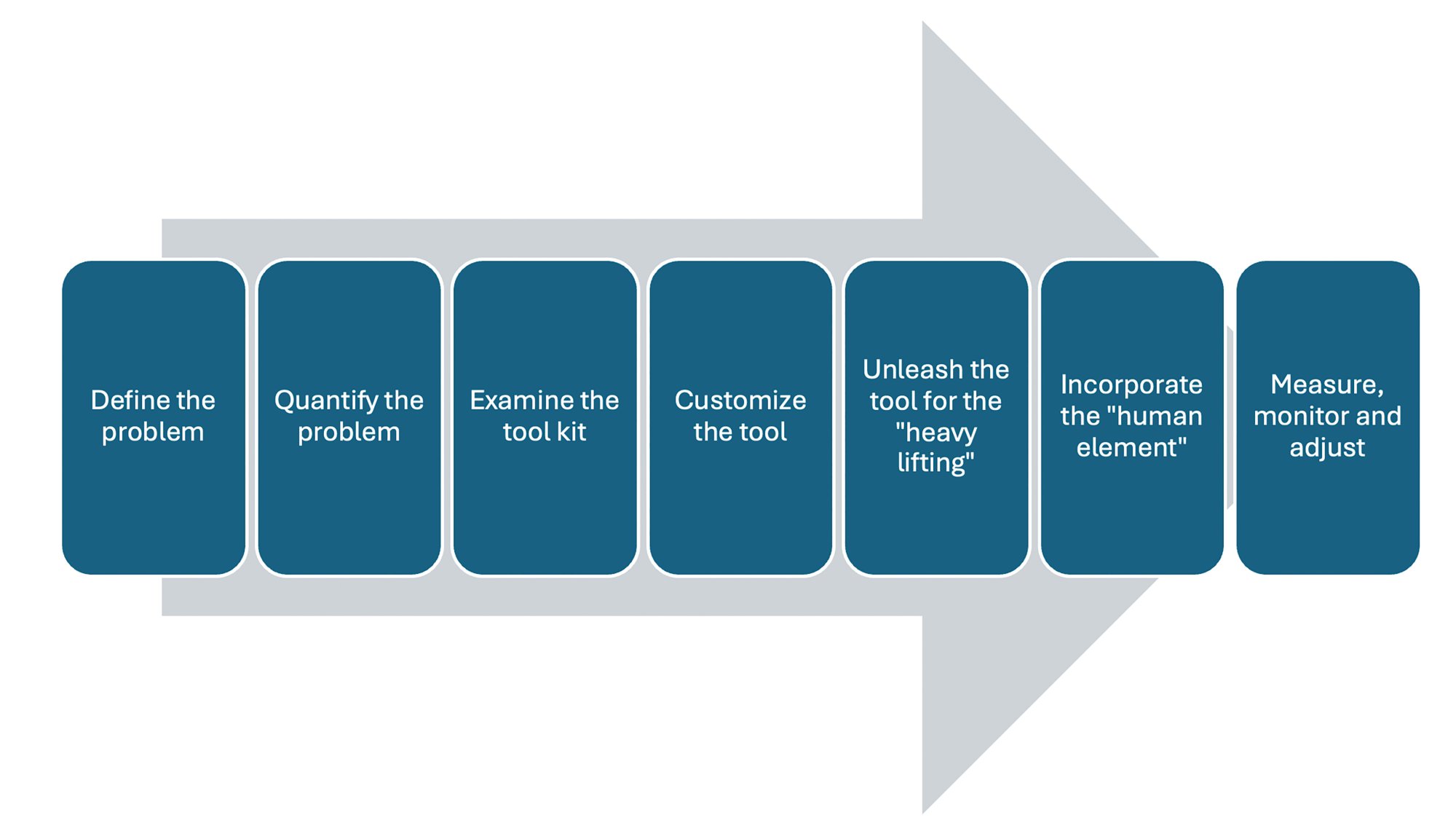
It seems like we cannot begin a strategic conversation without uttering “artificial intelligence” (AI) at least 1,000 times. There is a certain level of fervor that contractors get about discussing digital AI in a tangible world of concrete, steel and timber. There is a pantheon of AI solutions already in the marketplace, and that marketplace is changing at an exponential rate. Many strategic construction leaders have the FOMO — fear of missing out — that comes with determining the right solution.
There is no doubt of a very bright future for AI tools in the construction world, but there is a case of leaders putting the cart in front of the horse. Put another way, have we forgotten that AI is, in fact, a tool that at its core solves problems and removes roadblocks?
Let’s use a simple analogy. The author of this piece has to meet a deadline. Maybe that author is seeing the deadline creep up and is also facing writer’s block. Wait, isn’t there a tool that will write his piece for him and perhaps even make fewer grammatical errors in the long run? Early adopters, I’m sure you’re thinking: “Just another Gen Xer (or any older generation) doubting the merits of this true game changer.”
Quite the opposite. I do agree that AI is an example of a “tipping point” (as illustrated by Malcolm Gladwell) in history. This piece just happens to be a practical viewpoint of strategic integration of AI. And for the record, no AI was used in the creation of this article.

If Figure 1 looks an awful lot like DMAIC (define, measure, analyze, improve and control) from the world of Lean and Lean Six Sigma, it is probably because that model is somewhat timeless and practical in its approach to solve an organization’s challenges. The same concept applies with AI. Examine the steps below that explain this process in practical terms.
Define the problem.
Simply put, what are you solving for? Is this an area where AI can help, or would a simpler solution work? For instance, could the problem be one of the following?
- Contract terms and conditions are creating issues because of their complexity and the excessive legal expenses that are incurred with every new work order.
- Items are being missed in estimates, creating overruns in labor and materials.
- Collections of accounts receivable are lagging, and it seems that the most challenging accounts are those that have the lowest margins.
There is likely an AI tool that can help identify a solution or even create some replicable model that can be leveraged long-term. However, as is apparent with this first step, AI is not simply a matter of taking the “blue pill” (see “The Matrix”) and making ALL problems disappear.
Quantify the problem.
This is always a challenging step. Ultimately, you need to determine what is the cost to the business or what is the potential return to the business. Using a corollary example, consider a firm’s decision to monitor its small tools and equipment. Everyone gets frustrated by lost or broken tools. The knee-jerk reaction is to hire a tool manager, get an inventory management system, etc. All viable ideas, but what if the lost tools account for only $15,000 a year? Just hiring someone to manage this will be $40,000 to $50,000 a year — all to solve a $15,000 problem. The same context occurs with AI. There are free solutions and expensive solutions. What is the cost/benefit of any tool or solution?
Examine the tool kit.
New tools emerge daily. Some are construction-specific, some are more generalized and some are developed in-house by really smart individuals. In the same way a firm might select an enterprise resource planning (ERP) system, practitioners need to examine what will provide the best solution based on the myriad of options in the market already. Put another way, if you were hanging something on a wall, does that mean a hammer/nail, screwdriver/screw, or even a power drill?
Customize the tool.
The devil is in the details. Just like any new system, there is always a level of customization that has to occur to make it relevant to the firm. More importantly, the “fun” of AI is determining the right logic or questions to use as the tool set. For anyone who has used ChatGPT, half the fun is determining the right question or phraseology to use to start the engine. The best part of AI is learning, and the more data that is inserted based on a firm’s situation, the better the long-term analytics.
Unleash the tool for the heavy lifting.
When you consider why AI has relevance, consider the reams of cost data that a firm has within its estimating database. A human could develop pivot tables or databases to go line item by line item to develop the right analytics. Or, AI can review that same data stack in seconds and provide a summation of that data.
Incorporate the ‘human element.’
There are people who fear AI, and we aren’t referring to the Skynet level of fear (see “The Terminator”). As stated above, AI is the hydraulic crane doing the heavy work. The human is now in a position to make better fact-based decisions. Think of how you want your project managers to operate — do you want them spending days creating a database, or making better decisions? That is the power of AI.
Measure, monitor & adjust.
So, after all of these changes, is it working? Are you seeing the return on investment you expected? Where do course corrections have to occur to the process or the tool? This is no different than any system that is created within a firm. First, are the practitioners using the tool (compliance), and is that tool providing the return (end result)?
The internet, wireless technology and autonomous vehicles have all been seminal moments in history. AI is yet another tool that has the ability to be a force multiplier to the construction industry. However, it requires a deliberate strategy and a tactical approach to harness its power and avoid “chasing the rabbit.”
Now, if I could only get AI to do my weekly exercise routine while I binge-watch my streaming shows. That is a force multiplier!
